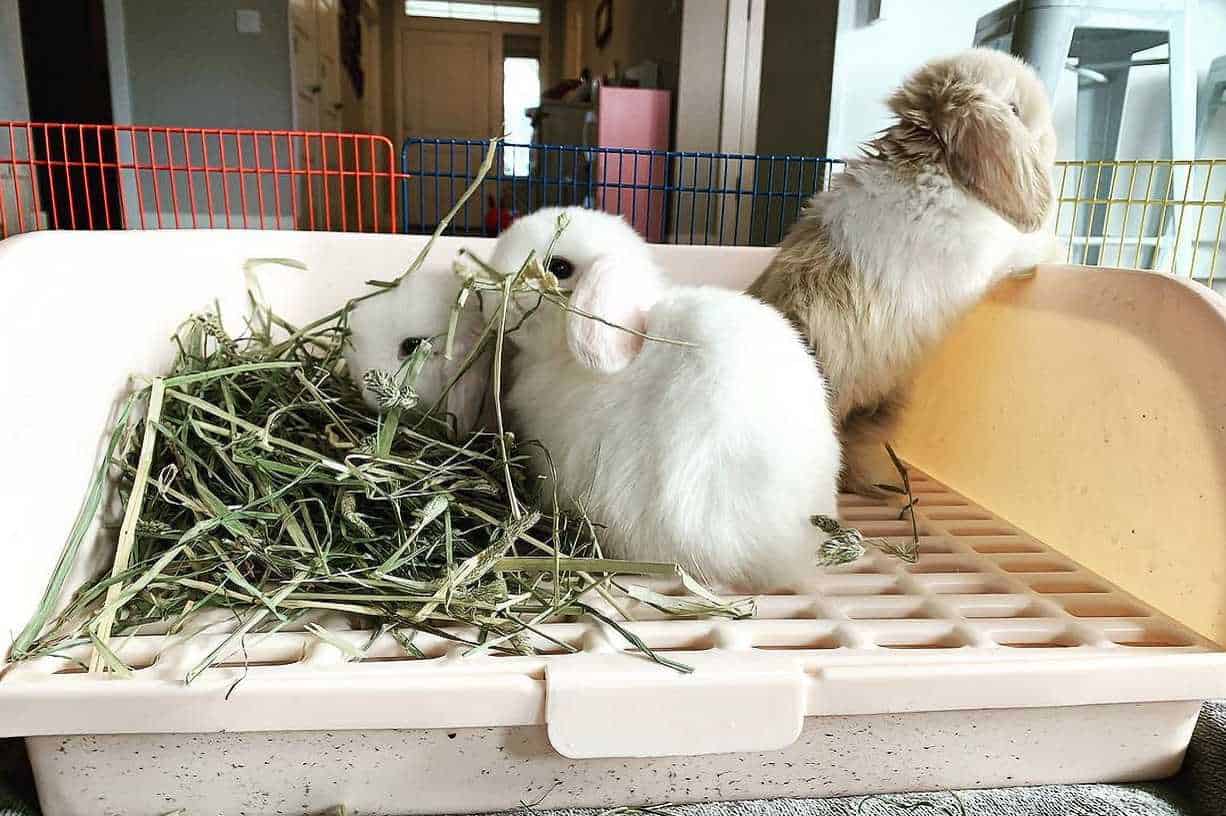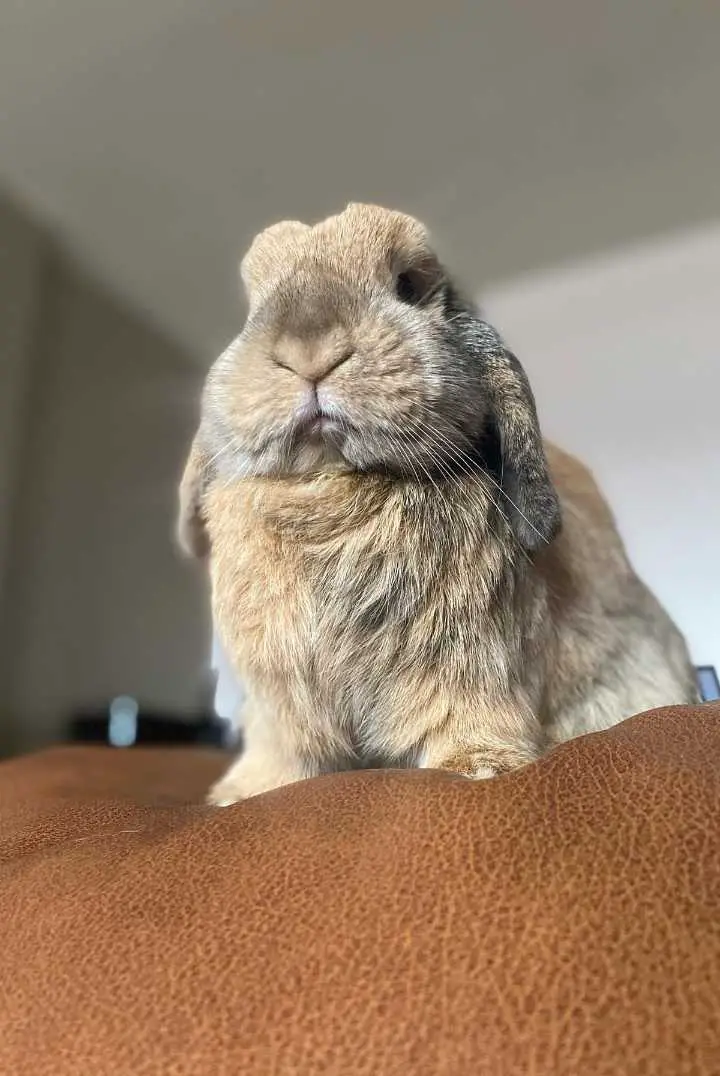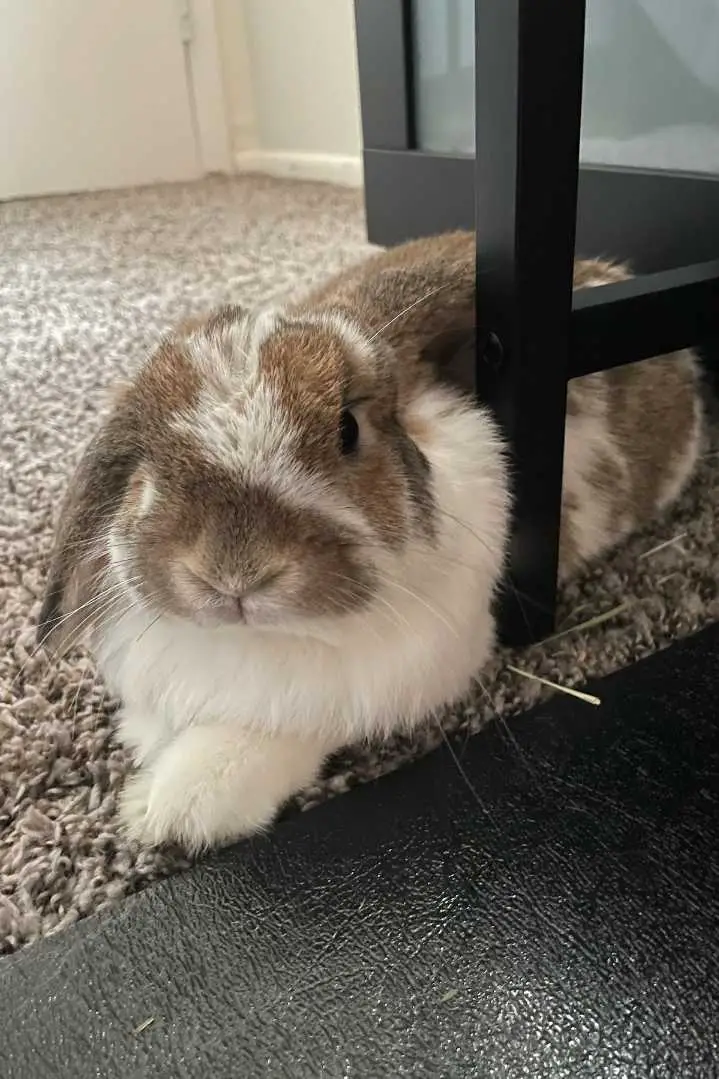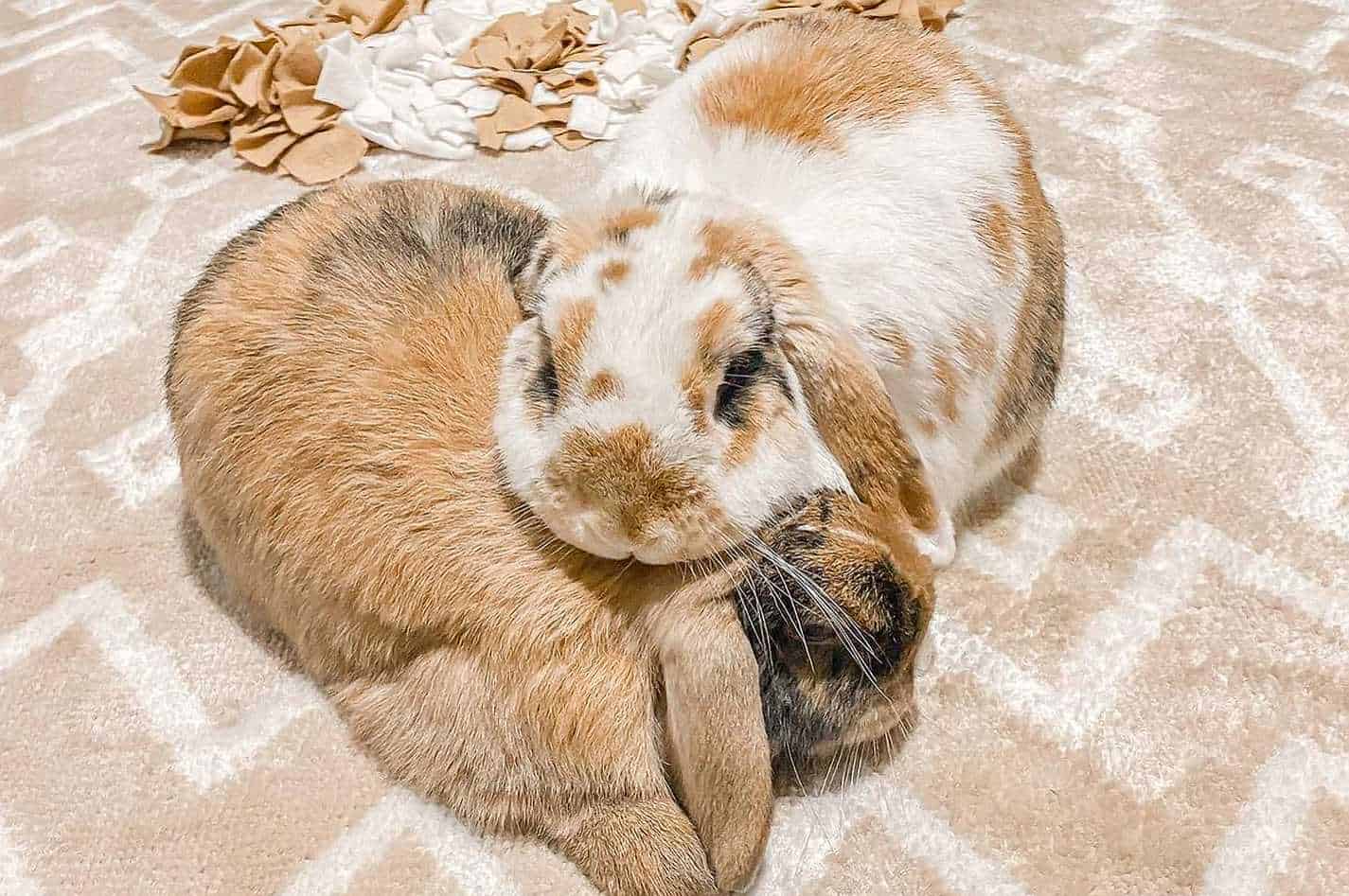Rabbit breeds vary in size, shape, colors, and temperaments. This makes it challenging to select the right one. Have you heard of the Holland Lop Rabbit? It’s a popular breed in the United States and the United Kingdom. Discover if it’s the ideal pet for you in this post.
Holland Lop Quick Breed Info
The table shows some quick facts about this cute rabbit breed.
| Name | Holland Lop |
| Family | Leporids |
| Size | Miniature |
| Weight | 2-4 lbs. |
| Color | Solid and broken |
| Lifespan | About 10 years |
| Rarity | Common |
| Similar Breeds | French Lop, Netherland Dwarf |
| Temperament | Playful, sweet, and friendly |
| Suitability | Quiet households |
Holland Lop Experimental Background and History
Adriann de Cock began working on this rabbit breed in 1949 in the Netherlands. He aspired to create a mini version of the favored French Lop. This breed was huge and heavy and was popular in Europe.
De Cock sought to mix the characteristics of a Netherland Dwarf and a French Lop. However, these two are very distinct breeds.
The breeding turned out to be a failure. The resulting six kits had upstanding ears. They lacked the drooping motion that you’ll find in today’s Holland Lop.
De Cock took one of those six bunnies and bred it with an English Lop in 1952. He successfully developed a Holland Lop with floppy ears after several hit-or-miss attempts.
The Governing Rabbit Council of the Netherlands approved this breed in 1964. The American Rabbit Breeders Association (ARBA) also accepted it in 1976. Since then, the magnificent Holland Lop has thrived in many parts of the world.
Holland Lop Specified Breed Standard and Appearance
Breed Standard
Holland Lop bunnies must have a tiny body that is dense, solid-looking, and robust to meet the required breed perfection. The same guideline also applies to the head and ears.
Basic Appearance
Holland Lops are petite rabbits that can weigh anywhere from 2 to 4 pounds. They are among the world’s tiniest bunnies. They are often considered ideal pets due to their diminutive size.
These bunnies sport a stocky image due to their broad and short bodies. They also have thick, short legs and take on a cat-like stance. They rest more on their back legs and barely on their front feet.
The Holland Lops have a compact body with a rounded face and well-proportioned head. The does are usually larger than the bucks.
Their drooping ears give them an adorable appearance. These are also their most defining features. However, their ears usually do not flop until they turn two or three months old.
Coat
The coat of the Holland Lop is a rollover type. It returns to its original position if you comb it. It’s thick and modest in length.
It doesn’t take much effort to keep this smooth and lustrous coat in good shape. The Holland Lop is a low-maintenance breed. It’s not surprising that they fascinate children worldwide.
Colors
Holland Lops come in a wide range of colors, split into two categories: solid (one single color) and broken (with patches).
There are 8 primary color categories for Holland Lops. Each variety has its own set of colors.
Agouti
Colorful bands and dark patterns adorn these rabbits. You can see white streaks around their nose, eyes, belly, mouth, under their tails, and inside their ears. Their colors are as follows:
- Lynx
- Squirrel
- Opal
- Chestnut
- Chinchilla
- Chocolate
- Chocolate chinchilla
Self
The most basic color pattern that Holland Lops may feature is self-colored. A single color covers their entire bodies. Sometimes their eyes flaunt different tints, yet they all have one dominant body color.
The bunnies in the self-group have a single solid color, which includes:
- Blue
- Black
- Chocolate
- White
- Lilac
Broken
Colored patterns with white make up this category. It’s also practicable to get tricolors. The colored portion should not go less than 10% and not over 70%.
A Holland Lop that is mostly white with a color lower than 10% is called “charlie.” This is not an ideal bunny, especially for exhibits. Also, a bunny with excessive color cannot compete in shows.
Pointed White
Pointed Whites is one of the strangest color categories for Holland Lops. These bunnies possess white bodies with ruby eyes. They exhibit dark point patterns on their ears, noses, tails, and feet.
Color variations include:
- Blue
- Black
- Lilac
- Chocolate
Shaded
Shaded Holland Lops possess darker markings on their head, ears, feet, and tail than the solid-colored ones. Broken kinds belong to this category; however, others categorize them separately.
Shaded varieties include:
- Seal
- Sable Point
- Tortoise
- Smoke Pearl
- Siamese Sable
Tan Pattern
The head, upper body, front feet, and outside the ears of tanned bunnies are all solid colors. Contrarily, creamy white ticking appears around their ears, on their bellies, and front feet and legs.
Ticked
Ticked bunnies are also uncommon. You might confuse them with agouti rabbits since they are also ticked. However, genuine ticked bunnies are either gold-tipped or silver-tipped.
Ticked Holland Lop variations include:
- Blue
- Lilac
- Black
- Chocolate
Wide Band
This category includes topcoat and undercoat colors. Bunnies have white streaks around their eyes and ears, bellies, and at the tip of their tails.
The following colors make up this group:
- Fawn
- Cream
- Frosty
- Orange
- Red
- Tricolors
Holland Lop Typical Personality and Temperament
Holland Lop rabbits are possibly the easiest of all bunnies to care for. They’re often cheerful and laid-back, making them perfect for families. So, don’t get startled if they jump onto your lap to sleep, relax, or bond with you.
These rabbits are recognized for their calmness. They enjoy spending time with their keepers and aren’t afraid of them. They want to spend time both resting and having fun.
However, you should respect your pet rabbit’s personal space. These bunnies will get nippy and chew if they feel scared or upset. Their nibbling shows that they don’t ignore annoyances.
They enjoy chewing on things more than bunnies usually do. So, they’ll need a lot of chew toys to keep them from biting your items. This helps keep their teeth at a manageable length.
Male Holland Lops are less snarky than more restrained females. However, the females are less untidy. They will also less likely to nibble your belongings than the bucks.
Holland Lops are vibrant creatures that thrive on human interaction. You cannot place them in a cage for long periods. They must exercise daily due to their degree of activity.
However, Holland Lops will hide and act nervous in your presence until they feel adjusted to you. You cannot easily overcome this by regularly picking them up. Pet them daily even if they haven’t come to know you yet.
Holland Lop Common Health Issues and Treatments
Holland Lops are prone to specific health issues like other rabbit breeds. The following are some health issues seen in these bunnies.
Otitis
Holland Lops can get ear infections like otitis like most lop-eared bunnies. This condition causes the ear canal to swell and itch. The additional fold in these bunnies’ outer ears causes wax accumulation. This can result in yeast or bacterial infections.
Symptoms are scratching the ears, swelling, head tilt, and weight loss. Paralysis and convulsions may occur in severe cases. A vet may require a CT scan in this case or antibiotics. However, surgery may also be recommended.
Dental Disease
Dental issues also affect Holland Lops since their teeth are ever-growing. They need a well-balanced diet that includes enough hay. This helps grind down their teeth evenly.
Overgrown teeth can also cause mouth alignment issues, abscesses, and infections. You need to file overgrown teeth regularly. Moreover, your vet should remove abscesses not responding to antibiotics surgically.
Parasites
Parasites are also a frequent issue among Holland Lops. For instance, Cheyletiella mites can irritate the skin and cause hair loss. However, you can treat them with anti-mite injections or topical treatments.
The E cuniculi parasite also infects many bunnies, particularly lop-eared varieties like Holland Lops. Spores in contaminated urine transmit it to other rabbits.
Symptoms include excessive head tilt, cataracts, and back leg immobility. Worming treatments can help treat the pain. But you cannot get rid of the parasite completely.
Uterine Cancer
Uterine cancer is the most frequent cancer type in female bunnies. Holland Lops are more likely to develop it. Symptoms include decreased appetite, fertility issues, and infant deaths. Cancer can reach the lungs, causing breathing problems.
Surgical removal of the uterus if cancer hasn’t spread yet may allow the bunny to enjoy a healthy existence. So, consult your veterinarian about spaying female bunnies.
Bladder Issues
Bunnies absorb and then release the calcium they consume through their bladders. This can cause calcium to accumulate, termed bladder sludge. Holland Lops may also suffer from bladder stones.
Symptoms are squeaking when urinating or urine scalding. Rashes develop because urine has been in touch with the bunny’s skin for an extended time.
These illnesses are usually simple to cure if found early enough. Surgery can remove bladder stones, while fluids can help drain out sludge. Antibiotics can help a rabbit recover from cystitis.
Sore Hocks
Sore hocks are pressure sores that cause inflammation where the feet touch the ground. Damage in the blood flow can worsen the swelling and cause infection.
Bacterial infection is very likely once the skin is injured. It can progress to other tissues, including the tendons and bones in the feet.
Deal with any underlying problems, including providing a suitable substrate for the bunny. Medical treatment can also help relieve the symptoms.
Hairballs
Swallowing fur while grooming causes this health issue. Brush your bunny to remove stray fur, particularly during the shedding season. Appetite loss is a common sign. Take your pet bunny to your vet if you suspect it has a hairball.
Holland Lop Basic Care Sheet
Cages and Supplies
You should keep your Holland Lops in a sturdy wire cage with a plastic base. Never use a wired bottom because it can cause sore hocks. You don’t need to prepare a larger enclosure since they are tiny.
Also, ensure that your home is rabbit-proof. Remove any cables or other dangerous objects on the floor.
If you want to keep your bunny indoors but don’t have enough room, set up an outside cage for them to play in. They provide additional space for your bunny to run around and play.
Always keep the cage out of bright sunlight and moist spaces. Secure it from predators and other household pets like cats.
Place soft bedding at the bottom to keep your bunny comfy. You can use wood pellets for bedding. You can also use horse bedding made of safe materials like aspen shavings.
Use white vinegar or a cage-friendly cleaner to sanitize the cage. Avoid using bathroom cleaners and disinfectants, as these can contain harsh chemicals that are harmful to your pet.
Clean the bedding daily and replace it once a week. This helps get rid of excrement to keep your bunny and its environment looking fresh. This benefits your pet and you as the keeper since it reduces obnoxious odors.
You should also attach hay feeders to the cage’s side. This allows your pet to pull out and nibble on hay when it’s hungry.
Nutrition
Always make sure your bunnies have access to as much hay and water as they desire. Hay is beneficial to their digestive system’s productivity and regularity.
Hay also wears down their teeth, making them less prone to dental problems. It should comprise about 70% of your bunnies’ diet.
Water and hay are considered essentials, but a good pellet is also required for nutrition. It gives them the vitamins and minerals they need to stay healthy.
You can also give them treats in moderation. Offer only rabbit-safe foods like fresh vegetables and fruits.
Exercise
Rabbits in their natural habitat run about three miles every day. So, provide your pet with adequate daily exercise to keep it active and happy. They should freely range about three hours each day.
Holland Lops are very active. They might become destructive if they get bored. Have them roam around your yard or garden, and they will be delighted.
Exercise is highly vital for your pet’s health. It keeps its joints moving, entertains it, and helps it maintain a healthy weight.
Grooming
Bathing is not essential unless they’re filthy. Brush their fur using a slicker brush two times a week. This is enough to keep their coat glossy and tangle-free.
However, you’ll need to brush them more frequently throughout the molting season. This helps them avoid ingesting stray hairs and eventually a deadly furball.
Summary
The Holland Lop Rabbit makes an adorable pet with its tiny size and drooping ears. It loves playing and bonding with humans. However, it also needs special care. Get familiar with its breed info and all its care requirements. This way you can ensure it’s always healthy and happy.






My husband and I are looking to buy a Holland Lop Bunny. We just lost our Snicker-doodles to a stroke and my husband is lost without him. He needs for companionship and as a service animal. This was our 2nd bunny and we are so lost without him